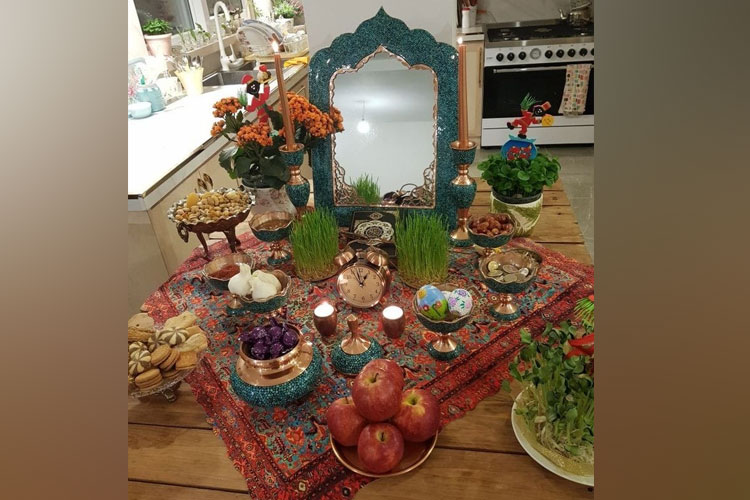Nowruz, New Year for the People with the Background of Zoroastrian

TIMESINDONESIA, JAKARTA – Nowruz is considered as the first day of spring and is celebrated on the day of the astronomical vernal equinox, which usually occurs on March 20 or 21.
It is celebrated by over 30 million people worldwide and has been celebrated for over 3,000 years in the Balkans, the Black Sea Basin, the Caucasus, Central Asia, and especially in Iran.
Advertisement
It is the most widely celabrated holiday in the Islamic Republic of Iran long predates the official religion. Back to 3000 years ago in Persepolis, the ancient Persian capital where Nowruz may has been first time observed.
Nowruz literally means New Day in Farsi, marks the first day of spring and the Persian New Year deeply rooted in the ritual and tradition of the Zoroastrian as the religion of ancient Persian before the arrival of Islam in the 7th century AD.
Zoroastrianism, an ancient monotheistic faith which is still practiced by some 25,000 Iranian. This year Novruz falls on March 20 and is widely celebrated across the Middle East, Central Asia, some Caucassian countries, South Asia, Northwestern China, and by the Iranians outside their homeland.
Nowruz festival has started since Thursday, 20 of March 2025 at 16:01 in Indoneaia as it was considered as the last Thursday of the year or called as Chahar Shanbeh Soori where the Iranians set up bonfires in public places and leap over the flames in a ritual, thought to ensure for having good health for the year. People sing along and jump over the fire hoping to get the red color of fire and to take back their sickly pallor.
Motthers prepare special soup consisting of roasted garbanzo beans and other tasty nuts, dried figs, apricots and raisin is made and later distributed while making good wish for the coming year.
Nowruz is holiday for everyone on the Spring Equinox in Iran and other countries celebrating the same respectively, and the holiday will include many stages and weeks of preparation.
Iranians start cleaning their homes and this annual spring cleaning known as Khoneh Takooni or shaking the house. Family will be busy washing the rugs and windows as it literally means to throw away the bad spirit and welcome the new spirit of Spring.
Parents will be busy buying new clothes for children and spend money for buying gold fish and other specific items related to the preparation of Haft Seen, a table setting with mostly 7 specific items correspond to one of the seven creations and the seven holy immortals protecting them.
In the present time, they are changed and modified and kept the symbolism. All the 7 specific items start with letter as for Sib (apple), Sabzeh (sprout wheat green grass) for rebirth and renewal, Serkeh (vinager) for patience and wisdom gained through aging, Samanoo (a meal made out of wheat) for affluence and fertility, Senjed (a special kind of berry) for love, and Seer (garlic) for medicine and maintaining good health and Somagh or crushed spice made from reddish berries for recalling the sunrise.
In today's Nowruz table setting, Iranians consider to have the ritual of growing seven seeds as reminder that this is the resurrection and eternal life to come.
Sabze or wheat or lentil representÂing new growth is grown in a flat dish a few days before the New Year and it is decorated with colorful ribbons and is kept until the 13th day of New Year.
Other additional items are placed beautifully on the the spread called Sofreh like Mirror, placed on the spread or Sofreh with lit candles as symbol of fire to refect on the previous year.
Live gold in a fish bowl to represent new life and will be kep after the celebration. Orange in a bowl to symbolize the earth. Decorated egges as for the fertility.
Coins are place for gaining the prosperity in the future and Holy Qoran placed on Sofreh in order to bless the New Year. Some people also place Divan-e Hafez or poetry book of Hafez and during the last day of Wednesday elders will ask the whole family to read some popular verses.
Some people will also place Shahnameh or the Epic of Kigs of Ferdowsi on the Sofreh as an Iranian national book. Iranians believe that Shahnameh has more Iranian identity values and spirits for the ancient celebration.
Elders distribute sweets and children receive coins on the first day of New Year. The 13th day called Sizdah Bedar, spent mostly outdoors. People will leave their homes to go to the parks for picnic. It is a must to spend Sizdah Bedar in nature as in this day, people will throw the Sabze away to avoid misfortunes.
People begin making short visits to the homes of friends and family throughout the day and night and the host of each home will provide nuts, sweets, dried fruits and tea to their guests.
After all Nowruz is a fun time for all of the Iranians, old and young who will be very happy enjoying their tasty delicacies such as Baqlava, a flaky pastry sweetened with rosewater, Naan or cookies made from rice flour and Noghl or sugar-coated almonds and Samanu, a sweet pudding made of sprouted wheat.
Madame Elaheh Boujourdi, wife of Iranian Ambassador made such beautiful Haft Seen with full Nowruz items that should not forget a single one. Her favourite color of green can be seen by the big green miror and green bowls that give the sparks on her Haft Seen in whole.
The woman who adores beautiful words of Rumi sends her warm greetings to the Indonesian people for observing the Holy month of Ramadan, Nowruz and the coming Idul Fitri celebration. May we get blessings from the Almighty. (*)
*) Nia S. Amira is Senior Author for Times Indonesia. She becomes reliable sources for Azerbaijan, Iran, and she is reseacher for Silk Road. She is Poet Laurette well-known internationally.
**) Ikuti berita terbaru TIMES Indonesia di Google News klik link ini dan jangan lupa di follow.
| Editor | : Wahyu Nurdiyanto |
| Publisher | : Sofyan Saqi Futaki |

